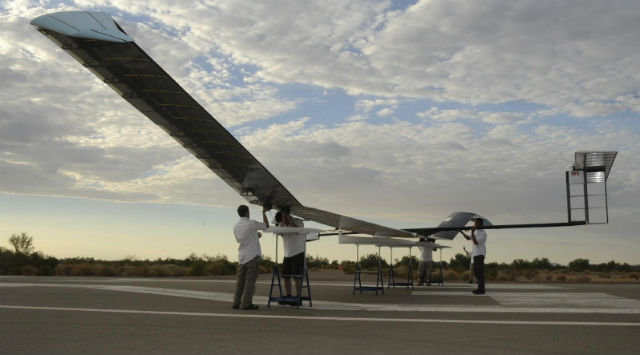A recent endurance test of Airbus Defence & Space’s Zephyr 7 high-altitude pseudo-satellite (HAPS) resulted in the system becoming the first of its type to receive UK Ministry of Defence military registration.
Zephyr 7 – now designated PS001 – is the first HAPS to be registered in the UK. The type carried out an 11-day non-stop flight in winter conditions, deployed with an undisclosed payload and controlled via satellite communications for the first time.
The approval test was carried out in controlled airspace under the watch of the MoD, the Military Aviation Authority, the Type Airworthiness Authority (TAA) and the unmanned air vehicle arm of the MoD’s Defence Equipment and Support Group.
“This is the first time the UK’s military aviation authorities have expanded our well-proven procedures and regulations into the domain of these novel, long-duration pseudo-satellites,” says Grp Capt Paul Lloyd of the TAA. “It has been both instructive and encouraging to see how effectively the regulations and the Airbus approach to Zephyr were brought together to enable such an operation.”

Airbus Defence and Space
The Zephyr 7 is solar powered. The type stores solar energy collected during the day and uses it at night to keep the vehicle in the sky.
The test was carried out in winter conditions at an undisclosed location in the southern hemisphere. This meant days were shorter and nights were longer, thus putting more stress on the system.
Testing the beyond-line-of-sight control of PS001 using the satellite communication capability means Zephyrs will be able to operate anywhere in the world, while still being controlled from one central ground station.
The information collected from the flight will be used to develop the Zephyr 8 – the next developmental pseudo-satellite prototype Airbus is working on.
Airbus’ Zephyr prototypes hold the record for the longest flight without refuelling – 14 days – as well as the record for the highest operating altitude of 70,740ft. The system has to date conducted some 850 flight hours.
Source: FlightGlobal.com






















